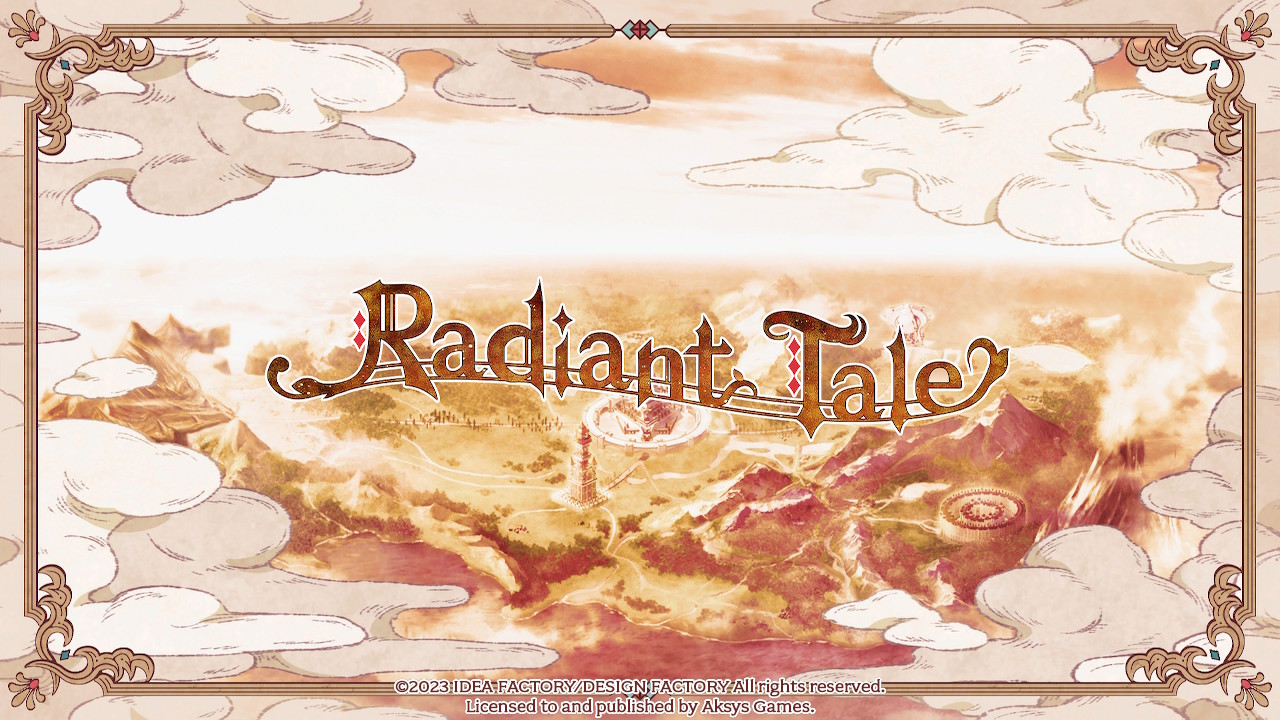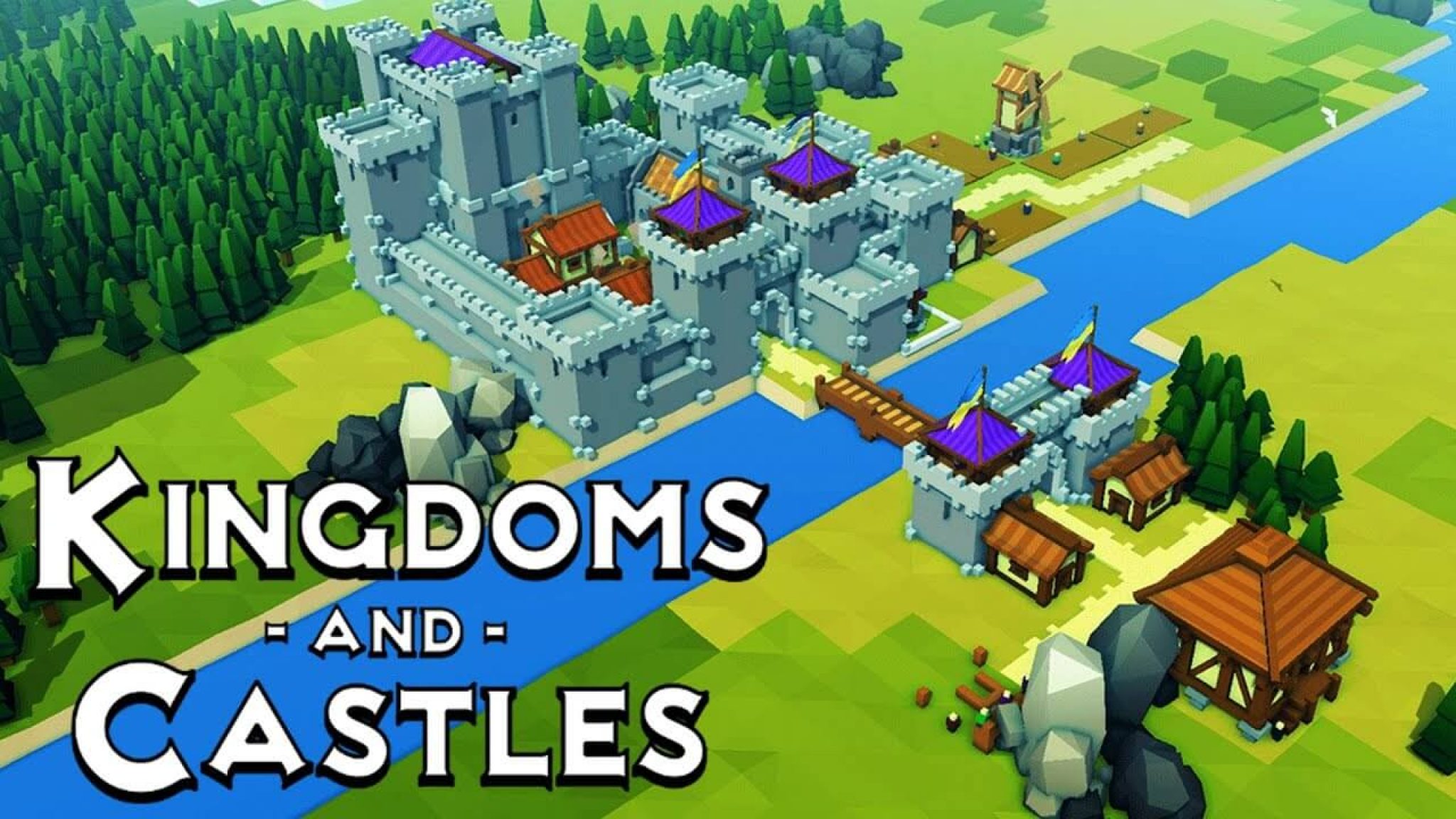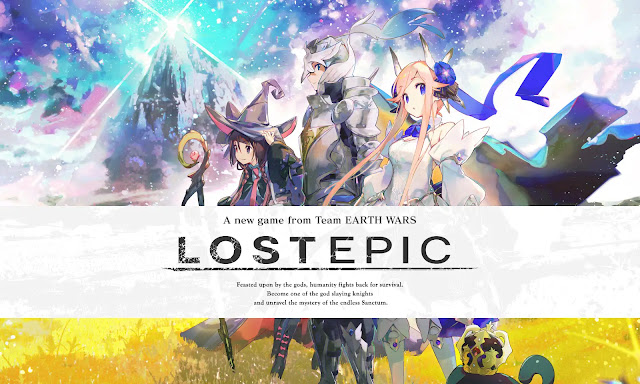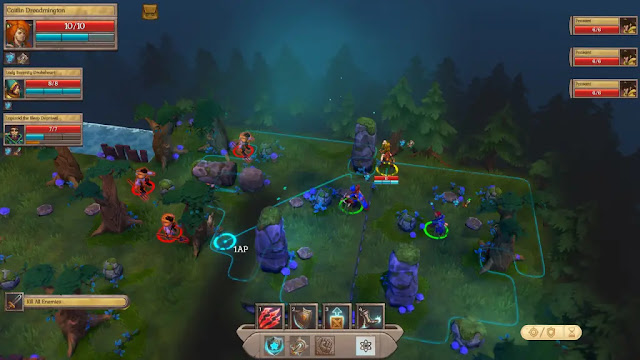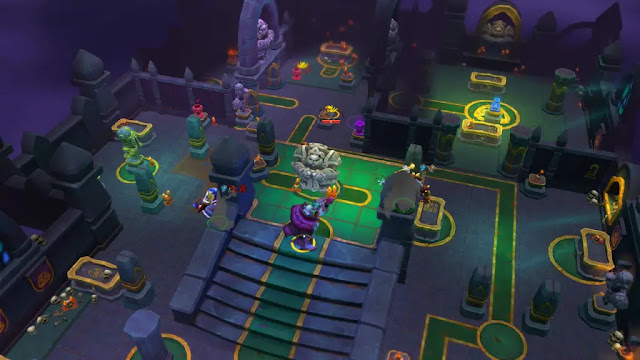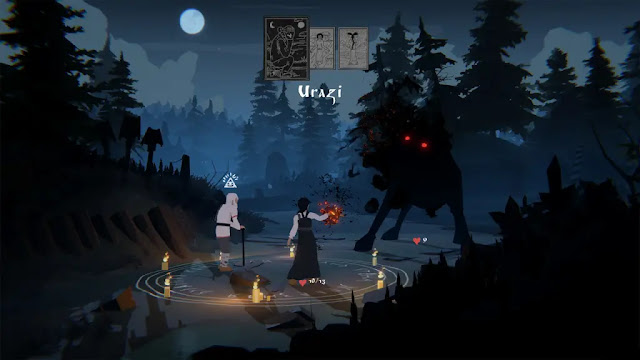Dragon Star Varnir by developer Compile Heart
and publisher Idea
Factory International—Switch review written by Richard
with a copy provided by the publisher.Estimated reading time: 11 minutes
Dragon Star Varnir is a title that
released on PS4 back in 2018, and is now getting a Nintendo Switch port. A game
that answered the question "what don't you want growing in your
abdomen", Varnir is a darker title than the standard Compile Heart fare,
so those JRPG enthusiasts that missed out on the PS4 and PC releases may be
interested in this recent port. The Switch port may come included with all the
DLC formerly at a cost, but how does the port stack up? Well, let's take a
look.
Dragon Star Varnir takes place in a world
where witches and dragons run rampant. Where dragons are born in the
"stomachs" of the witches, and eat their way out of the witch when
they are matured enough. In this world, there exists a group of knights
dedicated to the cleansing of the world of dragons and witches. A young man by
the name of Zephy is a member of these knights, but during an outing with his
squadron, he is separated from his friends. On the verge of death, he is
rescued by a group of witches hoping to use him as a bargaining chip to have
their friend returned.
Unfortunately, Zephy displays properties
of a witch after being forced to ingest dragon blood. With nowhere to go when
the knights reject to take him back in, Zephy ends joining up with the witches
Minessa, Karikaro, and Laponette. Together they are taking care of you witches
at their home, called a den. It's here where Zephy finds out that the witches
aren't exactly happy with the fact that they are essentially just food bags for
dragons. And so the journey begins.
If you've ever played a Compile Heart title
before, you're probably going to have a pretty solid idea of what you're
getting into gameplay wise. Dragon Star Varnir is a 3D field exploration with
turn based battles when you interact with enemy icons on the field map. The
game will progress with some plot exposition, followed by exploration of a new
area, a boss fight, and then more talking. Repeat this over a number of
chapters and you have the formula for Varnir, albeit with a few twists thrown
in.
Field exploration consists of walking
around an area, or flying for faster movement for a short period, collecting
items from harvest points, destroying breakable items for loot, opening
treasure chests, and using each characters unique skills to help you explore.
In Varnir, you can switch the character shown while exploring the field, each
with their own ability, such as a barrier to protect against environmental
damage, or the ability to break barriers. Considering that you may start to
feel the dungeons becoming a little repetitive later in the game, the abilities
of the characters provide a nice way to break up some of the monotony of
repeated dungeon exploration.
If you interact with an enemy icon on the
field map, whether by touching it, attacking it, or having it run into you,
you'll start the turn-based battle portion. Here is where Compile Heart decided
to get a little more ambitious. Battles are fought on a three layer grid, with
your units in set columns but able to move up and down, and enemies on a larger
grid, that can also move up and down. Some bosses even take up multiple levels.
Fights against common enemies will see you tasked with defeating them, whether
that be by using magic, physical attacks, or by devouring the enemies.

An interesting facet of Dragon Star
Varnir is the ability to "eat" the common enemies. When fighting an
enemy, you have the option to use a devour skill. This has a chance, indicated
as a percentage, of how likely it is to "eat" the enemy. When
successful, that character will restore HP, SP, as well as earn the dragons
core. Enemies can also be fought in a standard fashion, using spells to set
traps and then knocking enemies into them, using skills to hit multiple
targets, or just straight up beating them down. Most enemies have both an
elemental and attack type weakness, i.e. water and slash, and using those types
of moves will deal increased damage. There is also a Fear Gauge, that when
filled will have your characters use a three hit combo.
For large boss fights, the enemy dragons
will take up multiple levels, and may often use skills that hit a full level.
By dealing enough damage to lower regions, you can prevent the boss from using
certain skills, like preventing the boss from healing or using an instant death
move. While the head always has to be destroyed to win, destroying other levels
is technically optional, although I would highly recommend it. Another thing to
pay attention to is the level you are situated on. You can unlock formations,
which will give you different bonuses depending on which height your character
is sitting at, but grouping up is just inviting the boss to hit your entire
party. You'll also probably be abusing the "dragon awakening"
mechanic. This occurs when a character has performed enough actions or been hit
enough, and will cause a transformation to a half-dragon state, restoring HP,
SP, as well as giving an attack boost.
While the interesting battle mechanics
were definitely a breath of fresh air from Compile Heart, I did feel as if the
battle system wasn't used to its full potential. Let's start with some common
battle issues. First up, planning generally isn't needed too much for common
battles. You can go in, throw some magic at the enemies, and be done with it half
the time. The other half the time, you'll get annoying enemies with a
ridiculous dodge rate you can't hit, and will simply be spamming the devour
moves hoping you eat them. The tiered battle system isn't really used to the
full effect it could be here, which is rather disappointing, and battles will
generally devolve into "what is my largest range magic" if you aren't
eating the enemies.

Boss fights on the other hand are done
fairly well in this regard, but are either super difficult, or pretty easy depending
on if you remember you can learn party buffing and enemy debuffing moves. I'm
serious, a full party 40% increase in all defenses is no joke. On a more
general note, upgrading character skills is done by devouring an enemy and
earning their core. You can then spend points you earn in battle to unlock
skills and stat increases. Apart from bosses, each core is character
individual, meaning you'll have to have ALL your characters devour every common
enemy if you want all the cores. At least the bosses cores are shared.
Once you've earned some core and started
expending points to upgrade the characters, you can set your skills. You have:
Physical, Magic, Devour, and Passive skill equips, and you can equip five
skills per category, provided each category is equal to or less than twenty
points. Each skill has a cost, with better skills having a higher cost, so you
need to really think about what you're equipping, especially in the passive
slots. If you're wondering about collecting cores, let me assuage you a bit. If
you go to use a devour move, little check marks will appear beside the
percentages for any enemies you have the core for. You can also swap to a
support character as a free action, meaning you can swap and then devour with
the support character. The cores themselves are little mini upgrade grids,
where you have to put points into certain skills to unlock the adjacent ones.
There are some skill overlaps, but that will simply unlock the skill in any
other grid once it's purchased in another.
Outside of the field, you will be hanging
around the witches' den, which acts as the sort of hub for your adventuring.
Here is where you'll find the shop, a quest area, an area to interact with the
other witches, an area for taking care of the little sisters, as well as an
area to craft elixirs. The shop I'd hope is self explanatory, as well as the
quest area. Interacting with the witches will allow you to give them gifts to
fill up an affection gauge. You can view scenes with the witches at set
intervals. In regards to the little sisters, they are the three witches that
are too young to go adventuring with you. As such, you need to provide them
with dragon meat at regular intervals to stave off the madness. But if you
overfeed them, the dragon will grow and burst out.

The little sisters have a madness
indicator that will change depending on how close they are to succumbing to the
madness, as well as a dragon growth gauge that will fill if you feed them. If
either of these indicators reach the end, the little sister will disappear.
While the dragon growth only increases when you feed them, the madness gauge
will increase while you're out exploring areas. For your information, thanks to
some testing and what I remember of the PS4 version, the madness is pretty much
only affected by distance traveled on a field map, so use that to your
advantage. This function puts the game on a sort of "soft timer"
where you have to manage your level and dragon core farming against the sanity
and dragon growth of the sisters. You don't get a game over for killing them,
but you also won't get the best ending either.
The elixir manufacturing area is
something rather unusual in terms of gameplay elements. As you play the game,
you will discover elixir recipes, either in chests, from defeating bosses, or
as quest rewards. These recipes can be used with dropped monster materials to
craft elixirs. Elixirs, when used, will summon dragons for you to fight. Upon
winning, you will earn a piece of equipment. Elixirs won't disappear if you lose,
so feel free to take a stab at anything you think might be with it. Tied to
this, equipment has a rank, along with the elixirs, which indicate a general
equipment strength.
As in true Compile Heart fashion,
cutscenes are done using Live 2D anime stylized character portraits, while map
exploration is done with 3D models. The environments are interesting, but
nothing to really write home about. The music is quite good though, which is
nice, and the enemy dragon designs are quite interesting, even if some of them
are hardly "dragons".

So what are the differences between the
PS4 and Switch versions? Well to start off, all the DLC is included in the
Switch version. The question is, what is actually in the DLC? Well, basically
anything of real interest is actually free DLC anyway, but what you're getting
is: 3 level cap increases, armor, weapons, and accessories, a new hardest
difficulty, and some items. While the equipment is certainly helpful early
game, but it also gets you into a bad habit of relying on brute force, which
definitely isn't recommended later in the game. The free DLC available is: the
weaker equipment, one level cap increase, and the new difficulty. In terms of
gameplay, I did notice that the hatch effect from when I played the PS4 version
wasn't on the dragons, but instead the draw distance, distance blurring,
sharpness and contrast of the Switch version was generally just less than the
PS4 version. Graphically wise, the PS4 version comes out on top.
Summary
In summary, Dragon Star Varnir is an
interesting title from Compile Heart that takes a few new and refreshing steps
away from their standard formula. The combat system is interesting and rather
unique, and while it didn't feel as if it used its full potential, it was
definitely a fun system to plan around. The devour mechanic was also a fun
gimmick, although the need for each character to devour an enemy to get their
upgrade grid was a little frustrating. As a port from the PS4/PC version, there
isn't really anything extra worthwhile added, and the graphic quality has
lowered slightly, but the game still runs smoothly. If you already own Varnir
on another platform, there isn't a need to purchase it again, however if you
missed this title on earlier, and you're a fan of JRPGs, I would definitely
recommend looking into it, especially considering the price.
Score: 8.0 / 10





